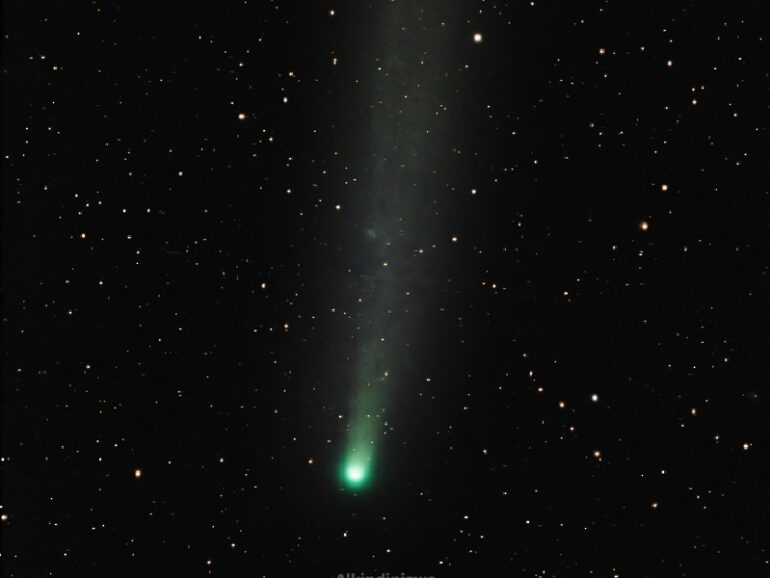
Muscat – Oman Space and Astronomical Society (OSAS) has documented the Comet Lemmon (C/2025 A6) in skies over the sultanate, marking one of the most significant astronomical events of 2025.
According to Ibrahim bin Mohammed al Mahrouqi, Vice-President of OSAS, the comet is visible through telescopes and to the naked eye in areas free from light pollution.
He explained that Comet Lemmon is a long-period comet that completes an orbit roughly every 1,200 years. Its path was slightly altered following a close encounter with Jupiter in April 2025. It made its closest approach to Earth on October 21 and will reach perihelion – its nearest point to the Sun – on November 8, at a distance of about 79.3mn km.
He added that late October offers ideal viewing conditions for the comet across Oman’s night skies, particularly in dark areas away from city lights. When viewed through telescopes, the comet appears as a bright core with a greenish gas tail extending away from the Sun.
Astrophotographer Ali bin Rabia al Kindi, a member of OSAS, captured detailed images of the comet from the Al Hajar al Gharbi Starlight Reserve. His photographs reveal a bluish-green tail caused by the interaction of gases – primarily carbon dioxide and cyanogen – with ultraviolet radiation from the Sun. This interaction ionises the gases, creating the comet’s distinct green glow. The dust tail, pushed outward by solar wind, adds to the spectacle.
Kindi said observing a comet that visits the inner solar system only once in more than a millennium is a rare privilege. He emphasised that such scientific documentation helps deepen understanding of celestial phenomena while inspiring greater public interest in astronomy.
He added that OSAS remains committed to strengthening Oman’s role in global astronomy and encouraging young enthusiasts, in line with Oman Vision 2040’s focus on science, technology and innovation.
© 2021 Apex Press and Publishing. All Rights Reserved. Powered by Mesdac